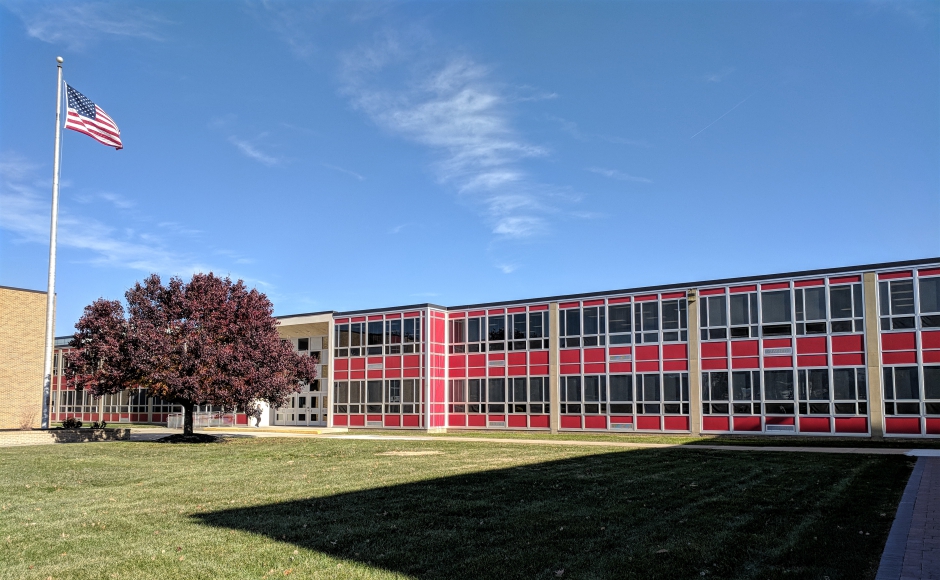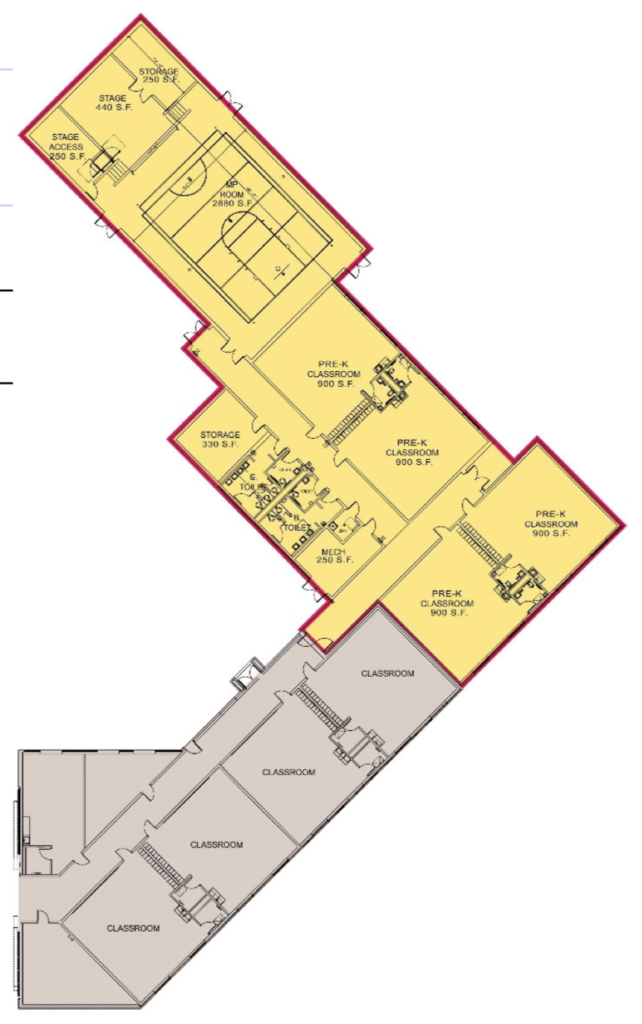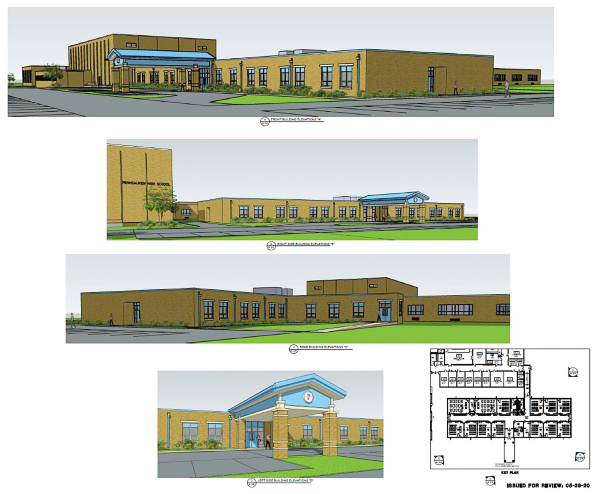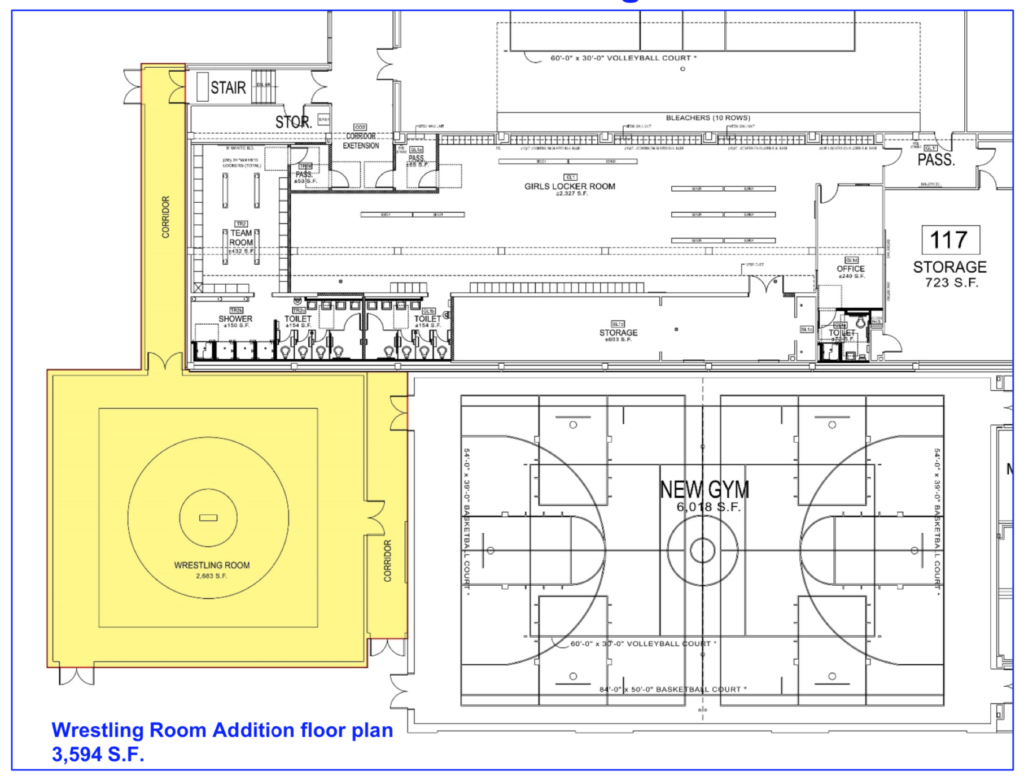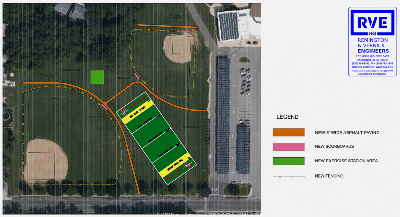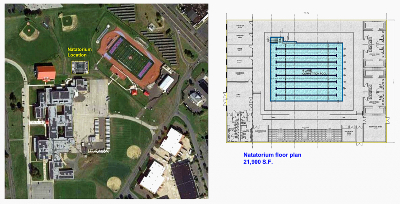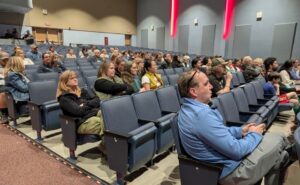The two-question referendum would increase taxes nearly $12 per month on a home assessed at the township median value to ‘complete the district,’ says Superintendent of Schools Ronnie Tarchichi.
By Matt Skoufalos | December 7, 2021
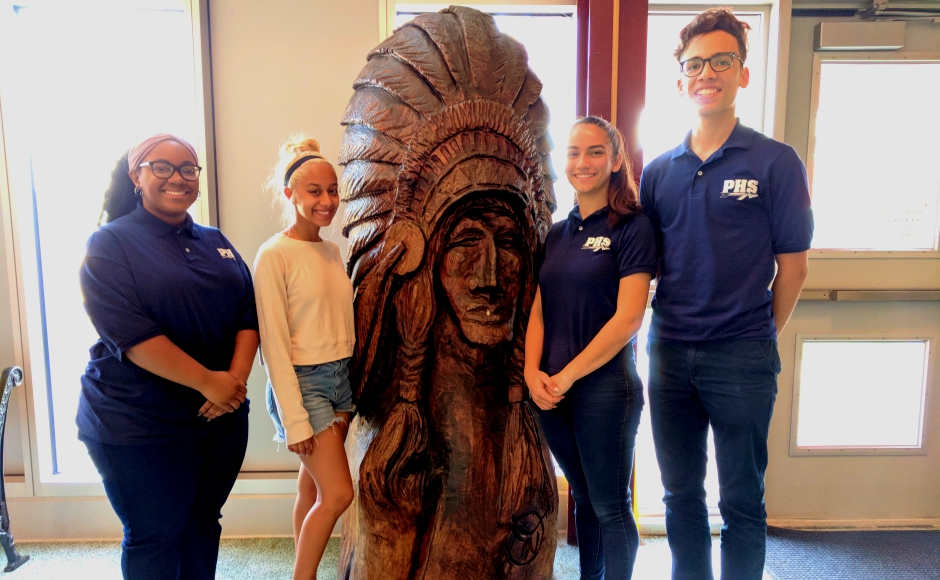
From left: 2018 Pennsauken High School Seniors Tiana Summers, Mariah Gordion, Nicole Alfano, and Ronald Estevez. Credit: Matt Skoufalos.
On December 14, voters in Pennsauken will decide whether to approve the second construction bond proposed by the township school district in the past three years.
That referendum also had the benefit of an uncommon perk: a $7 per month tax reduction, as the retirement of debt service incurred by the district in a 1998 bond measure coincided with the passage of the 2018 question.
In 2021, however, there’s only increases on the table; potentially another $32.6 million that would be shouldered locally if both questions pass. For a home assessed at the township median value ($140,397), that amounts to an increase of $143.52 annually, or nearly $12 per month over the life of the 20-year bond.
Pennsauken Superintendent of Schools Ronnie Tarchichi has labeled the bond, “The Next Chapter,” and Tarchichi believes that if both questions pass, they’ll help students in the district realize their educational and recreational goals fully.
“The idea for me was to build out the total school district,” Tarchichi said. “I wanted to complete the district from when I came in in 2016, and turn it into what I think it should look like.
“I want to give the students an experience here,” he said. “Going to school is not just about getting degrees and getting a career. It’s a part of your life that you’re always going to remember. I want to offer that to the students.”
Question 1
The first question proposes $26.9 million of capital improvements, $21.4 million of which would be shouldered locally against $5.49 million in state aid.
That includes $6.5 million in classroom expansions to the Baldwin Elementary School, which houses the district’s Early Childhood Learning Center; $5.9 million to replace the HVAC systems and improve outdoor athletic spaces at Phifer Middle School; and $14.4 million to create a magnet school, wrestling room, and athletic field at Pennsauken High School.
The full-day, pre-K program at Baldwin that was created by the 2018 bond referendum would be enhanced with the addition of a one-story, 11,293-square-foot addition with four pre-K classrooms and a gymnasium with bathrooms.
Work there would also replace 15,000-square-feet of original roofing that needs upgrades.
The additional classroom space at Baldwin would also free up room to allow for student growth at the elementary school level, and reduce class sizes, some of which are up to 24 students, Tarchichi said.
“We’re out of space elementary-wise,” he said. “We started the school year in the 4-5 building with 612 students, and [now] we have close to 700, and that’s just one building.”
With the added capacity, both Baldwin and Roosevelt Elementary Schools would expand their offerings to a full kindergarten-through-eighth-grade program. In 2018, the district had intended to develop Roosevelt as a standalone magnet school, but when Pennsauken High School incorporated new vocational and athletic programs after that referendum passed, Tarchichi said it made less sense to remove high-school students from that campus.
“Taking the students away from those programs wasn’t a great idea when we started looking at it intently,” he said.
Adding a magnet school to the high school, an upgrade contemplated by Question 1, would support its establishment as “a comprehensive high school,” Tarchichi said, allowing the highest-achieving students in the district to earn college credits for their advanced coursework, while participating in vocational training programs that can prepare them for professional licensure.
At present, there is no magnet division of Pennsauken High School. The new construction would add 10 classrooms, three labs, and a separate building entrance for an estimated 200 current students who want to pursue careers in fields like medicine, pharmacy, dentistry, and engineering, Tarchichi said. He also said that creating the magnet program wouldn’t add more than a few teachers to the district rolls.
“Most times when you have a comprehensive high school, you don’t have vocational elements like we do,” Tarchichi said. “[At Pennsauken High School], students can get up to 60 college credits and state licensure for cosmetology. That’s a really big positive for students.
“Right now, we have a little over 500 students on the vocational side in concentrations like culinary arts, cosmetology, welding, EMT and fire safety, HVAC, carpentry, automotive, Air Force ROTC, and health occupations for LPN students,” the superintendent said.
“We’re looking to build a diesel technology program, and we just signed an agreement with Puratos for an international program that would allow Pennsauken to open a baking CTE (career and technical education program).”
Question 1 would also construct an additional, full-sized varsity turf field at the high school as well as a wrestling room.
These projects aren’t only proposed because Tarchichi is a robust supporter of high-school sports, but also because he said the district is “out of space athletically.
“When you have games like soccer and field hockey and you don’t want to be double-booked with football, we want to offer the same type of courtesy to our other sports,” Tarchichi said.
“Multiple school districts have six turf fields,” he said.
“I’m trying to build a second one so we can have something for the other athletes as well.”
The absence of a dedicated wrestling room at the high school means that the team must “double down” in a shared gymnasium, the superintendent said. However, he believes its “fully matted” construction would benefit district special education programs and allow for additional specialized instruction such as yoga.
Question 1 would also construct an outdoor courtyard connected to the baking and culinary arts classrooms at the high school, which Tarchichi said is both a vocational element and a perk for students who might like to take their lunches outside in fair weather.
Finally, and importantly, Question 1 would also add HVAC service to Phifer Middle School, supplying air conditioning to the vast majority of the building that lacks it, as well as expanding its parking lot and improving grounds at the property.
Question 2
The second question put to Pennsauken voters in the referendum proposes $15.6 million of capital improvements, $15.1 million of which would be shouldered locally against some $475,000 in state aid.
Atop that question is $1.35 million in improvements to the youth athletic facilities at Phifer Middle School, some $860,000 of which would be covered locally.
That would go to creating a new, multipurpose athletic field, exercise station, and scoreboards, plus adding asphalt walkways and fencing around its baseball and softball fields.
Given the number of youth programs that use its facilities, Tarchichi sees these improvements as a benefit to the broader Pennsauken community beyond its middle-schoolers.
“We would look to have the middle school as a practice facility and a place to have games for all sports,” he said.
The second item on Question 2 is the most expensive single piece of the referendum, and one that would be entirely covered by local taxpayers: a $14.35-million aquatic center featuring an eight-lane, 25-meter competition pool with locker rooms, 350-seat bleachers, concession stands, offices, and a pro shop.
Tarchichi insisted that constructing the natatorium “is not just to have a swim team,” although he values the addition of another athletic option for students.
Swimming is “also a life skill,” he said, and offering classes would “complete the district” offerings as well as providing a state-of-the-art competition facility that could be used throughout the region.
“There’s not a lot of natatoria in the county,” Tarchichi said.
“It’ll be rented out like crazy for practices, [and] we would have youth education classes.”
In order for Question 2 to pass, voters must approve both questions.
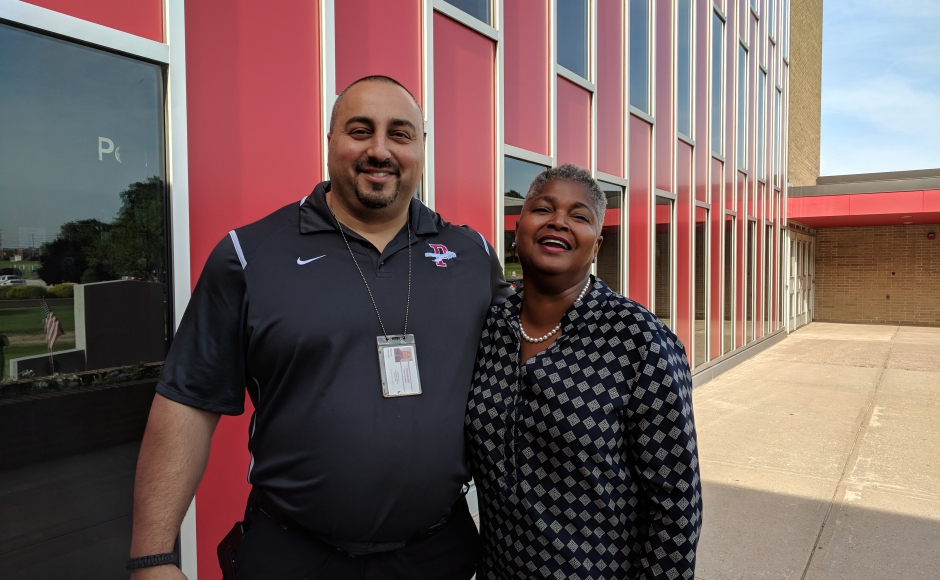
Pennsauken Superintendent Ronnie Tarchichi and BOE Member Diane Johnson in 2018. Credit: Matt Skoufalos.
‘It’s about the total package’
To Tarchichi, the bottom line for the 2021 bond referendum is that these facilities improvements will broaden the depth of experience for every student in the district for years to come.
While adding necessary capacity for a growing student population, he believes they can level the playing field with area districts of comparable size.
“It’s an education for everyone,” Tarchichi said. “You’ll never get that at a school like Haddonfield, like Moorestown, who are trying to be academic. I want them to have every opportunity that they could possibly desire.
“Because I have students here that sometimes don’t get the opportunities that you see in other school districts, it’s a challenge for me to give them other opportunities,” he said. “[So why not] build a college campus at their high school?
“It’s not just about the athletics, it’s about the total package of the education,” Tarchichi said. “You can leave here with 60 college credits. You can play any sport you want.
“If I’m a parent of a student in a magnet school, and they want to do welding, be part of the swim team, and the marching band, there’s not one high school that offers that except here,” he said.
“Facilities have a huge impact on schools,” the superintendent said. “When you start building things like that, it becomes the place you want to go.”
Voters will participate in the December 14 special election from 6 a.m. to 8 p.m. at their normal polling places. Sample ballots will be mailed to registered voters at their home addresses ahead of the vote.

